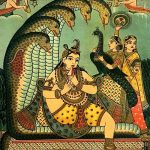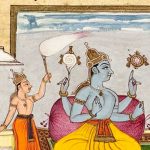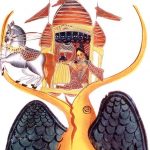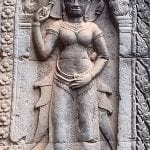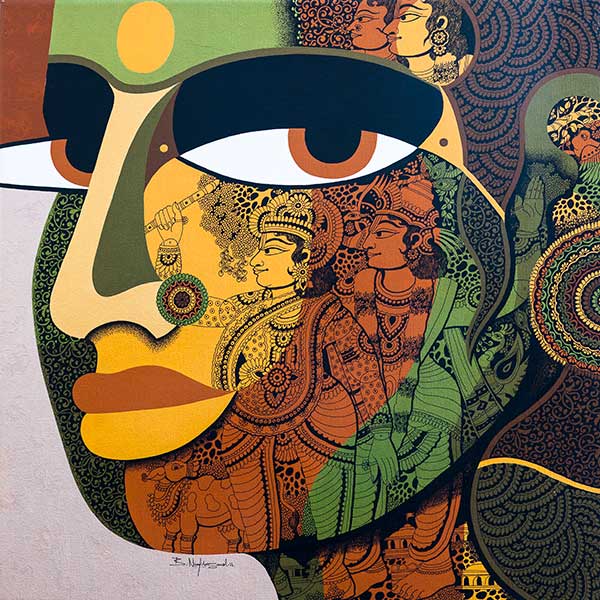Hindu Temples
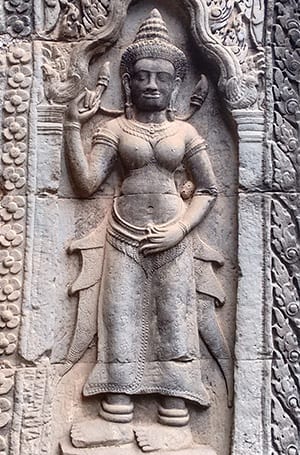
This course specialises in Hindu Temples worldwide, their significance within ancient and modern culture and their impact on Hindu religion over time. This is a visually dynamic course and encourages students to reflect on the iconography and symbolism within the art and architecture of Hindu Temples in India, Nepal, Sri Lanka, and South-East Asia. Students will gain a varied appreciation for different forms of Hindu Temples from around the world and will develop their understanding of symbolic imagery within Hindu culture and religion.
This course not only looks deeply at Hindu Temples in India and other Asian countries, it also encourages students to compare architecture, art, and other influences on Hinduism around the world. This course will equip you with the tools and knowledge you will need to develop your understanding of Hindu temples and their significance within modern society.
If you’re interested in learning more about this course, view our course breakdown below. Alternatively, view our Culture Learning Pathway for similar courses.
Start Date: Any time!
Self-Taught Course
Number of Sessions: Seven
55 pages. This course contains readings rather than the pdf textbook that most of our courses have. It does, however, have more than 16 hours of richly illustrated video.
On-Demand Video
The main video component of your course. On-demand means you can watch at the time that suits you.
16 hr 56 min
Campus-Wide Zoom Sessions
You will also be invited to join five general-interest Zoom sessions. These are open to all enrolled students and cover a range of topics related to Indian thought and philosophy.
They are a great way to meet students and tutors from other courses!
Session One: Visiting a Hindu Temple / Temple Prototypes and Symbolic Origins
This session identifies Hindu temple architecture, iconography, and worship to give students an understanding of how worshippers navigate the temple experience. Temples have been designed, both structurally and ritually, to profoundly engage all the senses of the worshipper in such a way as to induce in the worshipper a meaningful religious experience. In both this and other sessions this exploration of Hindu temple traditions will continuously refer back to how temple art, architecture, ritual, and symbolism work in tandem towards cultivating a palpable experience in the worshipper.
Session Two: Types of Hindu Temples
This lesson begins with the primary differences between the two main temple types: the north Indian style temple (known as the nagara or shikara style) and the south Indian style temple (known as the dravida or vimana style). We briefly cover what is called the ‘mule’, or hybrid, Vesara style that blends the two together. We also explore some unique regional temple styles that evolved at the margins of the northern and southern styles within India, such as in Kerala and in the Himalayas and also some of the unique temple styles that have evolved in cultural contexts far removed from India, such as in Nepal, Bali, and Vietnam.
Beyond this we learn some of the specialised terminology that identifies key temple architectural forms and what they symbolise. In addition, we will look at the various parts of the Hindu temple and explore the specific ritual, festival, and symbolic functions they serve. As the course continues we will build on this infrastructure to map the development of these forms, from the simple to the complex, as we carefully examine how early established temple forms evolve across time and from region to region.
Session Three: Gupta Period
The period when Hindu temple traditions evolve through a rich experimental phase and proliferate through much of India and Nepal coincides with the reign of the Gupta Empire. The Gupta Period was one of great cultural ferment and creativity, partly stimulated by the expansion of trade routes on the Indian subcontinent as such connections enriched culture as well as inspiring whole new modes of creative expression.
Session Four: Rock Cut Temples
Hindu cave temples are sites of stark grandeur and haunting beauty that seamlessly blend into the natural environment. Where the vibrant gods seem to spontaneously emerge, enlivened, from the naked rock. These are sacred structures that call the worshipper to enter into the very earth itself in search of the divine. And this is perfectly fitting for a religious view that sees the divine every bit as much on earth as in heaven.
Session Five: Early Freestanding Temples
The earliest freestanding temple from India in the archaeological record is a small Buddhist shrine at the site of Sanchi likely built by Chandragupta II in 412–413 CE. Its design is similar to a four columned Greek portico shrine. Nevertheless, we can assume that there were earlier prototypes of Hindu temples crafted in wood and thatch.
Session Six: Srivilliputtur
Here we will be exploring a single temple site at length. For this in-depth case study we have chosen the small temple town of Srivilliputtur in the south Indian state of Tamil Nadu. We will examine in detail its unique festival calendar and also focus in on how its yearly festival cycle shapes one important aspect of temple ritual practice: alankara, or ritual adornment.
Session Seven: Unique Regional Forms of Hindu Temples
While this exploration of Hindu Temple traditions has focused on the formative period and the early stylistic development, there have been many other unique regional forms of Hindu temple tradition. Many of these reached a high degree of sophistication and refinement and spontaneously evolved a very distinctive aesthetic. This final session seeks to fill in some of the gaps in this survey by touching upon a selection of regional temple forms. In addition, we will also briefly bring into discussion how the forces of colonialism and the advent of the modern Hindu diaspora have impacted Hindu temple traditions and adapted temples to new cultural and geographic contexts in the recent past and contemporary context.
 This course was made possible by a development grant from SolGroup.
This course was made possible by a development grant from SolGroup.
Associated Courses
Course Creator

Dr Layne Little
Layne teaches Hinduism, Buddhism, Esoterism, and Religion and Popular Culture at U.C. Berkeley and at California State University: Sacramento. He wrote the “Hinduism” and “Buddhism” chapters in Oxford University Press’ newest world religions textbook, Invitation to World Religions. He is co-author of OUP’s Invitation to Western Religions and Invitation to Asian Religions. In addition, he has published numerous articles on Śaiva Siddhānta, Tamiḻ Literature, and Siddha Tantrism.
